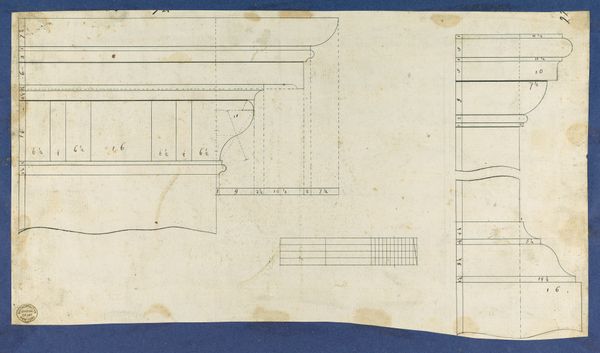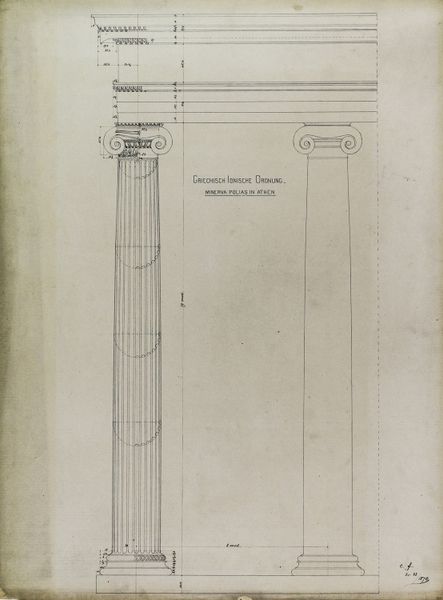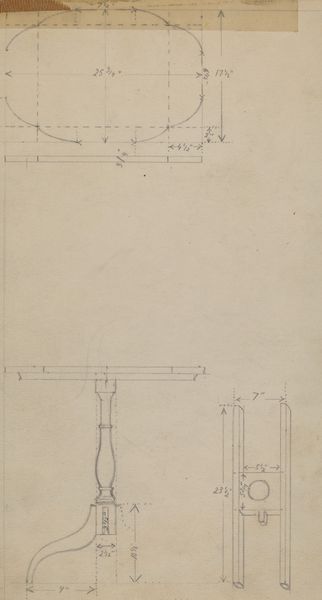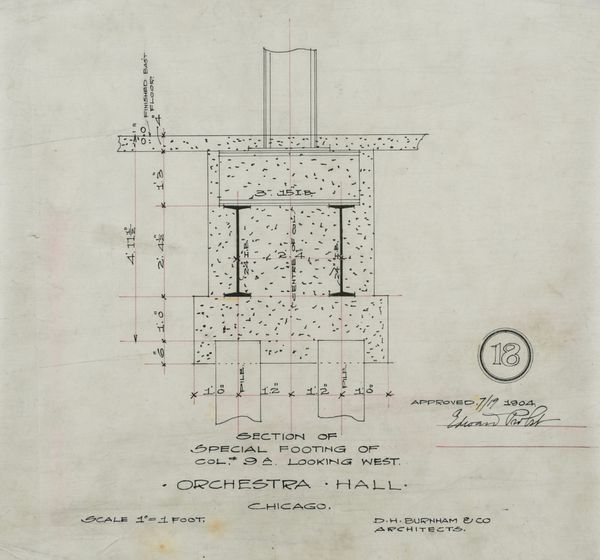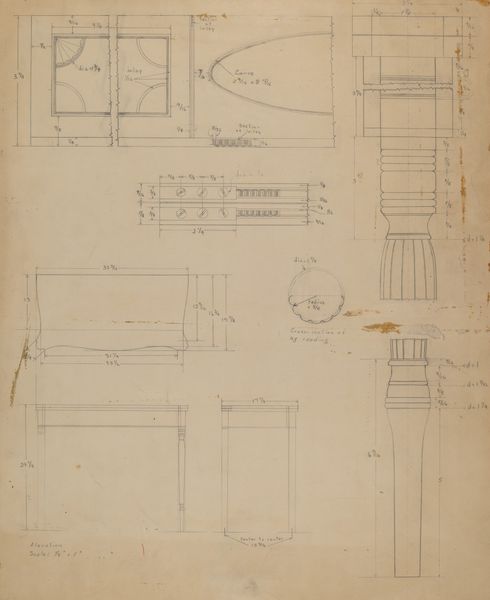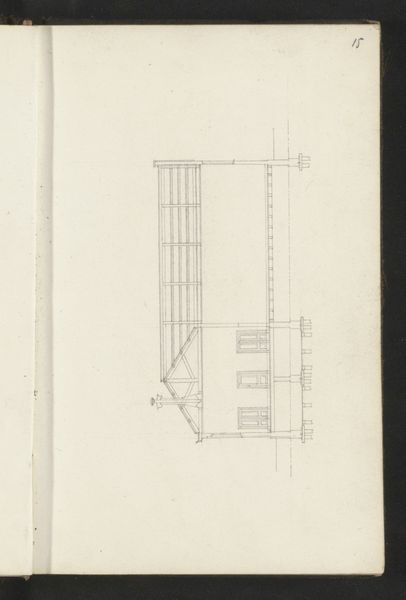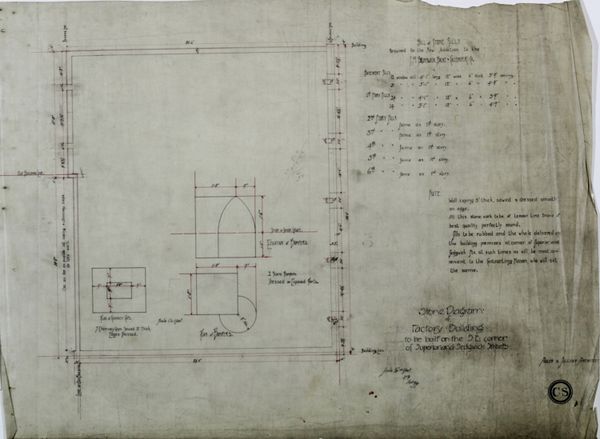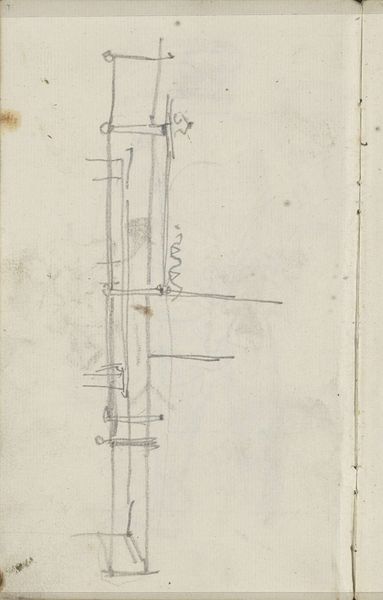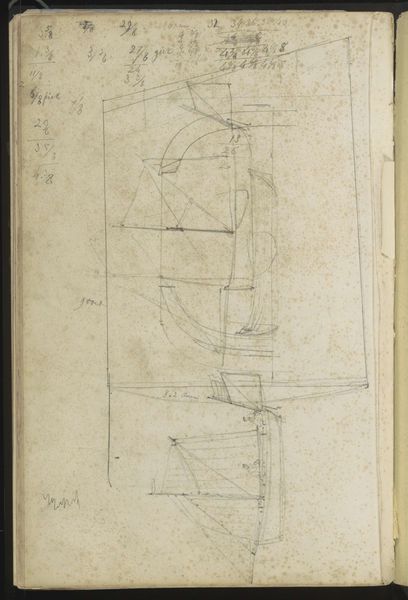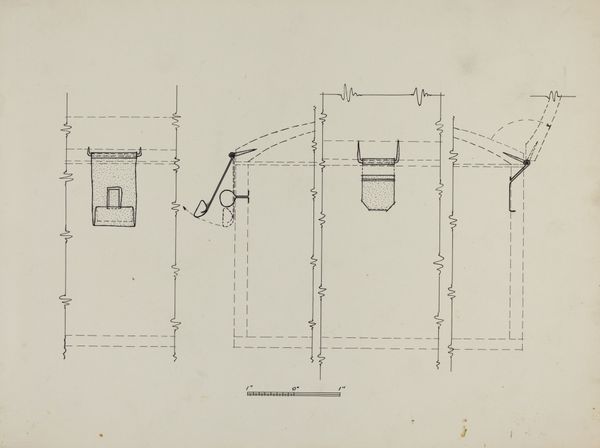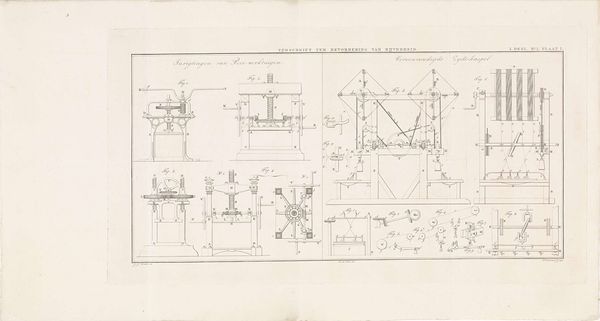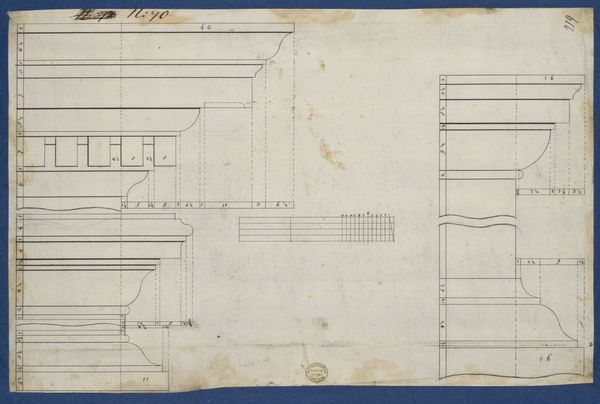
Brunswick Balke Collender Company Factory Building, Chicago, Illinois, Multiple Views Possibly 1891 - 1989
0:00
0:00
drawing, ink, graphite, architecture
#
drawing
#
ink
#
geometric
#
architectural drawing
#
united-states
#
line
#
graphite
#
architecture
Dimensions: 87 × 59.5 cm (34 1/4 × 23 7/16 in.)
Copyright: Public Domain
Curator: This intriguing drawing presents multiple views of the Brunswick Balke Collender Company Factory Building in Chicago. While the precise date is debated, it's likely from the late 19th century, attributed to Adler & Sullivan, Architects. It is rendered in graphite and ink. Editor: The first impression is one of blueprints and a highly technical design; the repetitive geometry feels industrial but precise. Curator: Precisely. These are not mere aesthetic exercises. Think of the labor that such a factory building implies; it represents the material culture of the Industrial Revolution. Note the explicit views for elevator enclosures – key for vertical material transport in early factories. Editor: That makes me consider the people, the workers in this very structure, often underpaid and exploited to support the factory. Who would have worked in the factory at that time? Were women and people of color employed in different types of roles in production? Curator: It's vital to remember Brunswick Balke Collender Company had diverse production. Not just billiard tables, but also bars, store fixtures and even ornate interiors for a wealthy clientele. The drawing shows how space was used for multiple lines. Editor: I think it is also easy to miss, because of the industrial feel, how carefully rendered this piece is with elegant lines. Yet I’m sure every detail impacted human interactions within these factory walls, influencing workers lives. Curator: Exactly! How materials like glass and iron were sourced, fashioned, and assembled shaped work within that building and its economic ripple effects on that factory and the broader economy. Editor: In our contemporary framework, seeing it as a social diagram offers ways of thinking about capitalism, manufacturing, and human relationships in these working spaces. Curator: I agree. It highlights the vital relationship between architectural innovation and its material and social impacts on industrial labor. Editor: Looking at the facade of that building is an excellent jumping off point for thinking about manufacturing, labor and culture, all bound together.
Comments
No comments
Be the first to comment and join the conversation on the ultimate creative platform.
